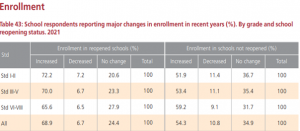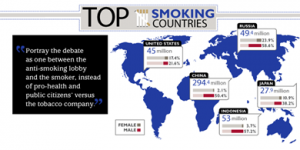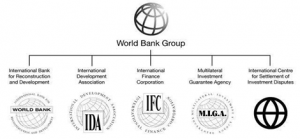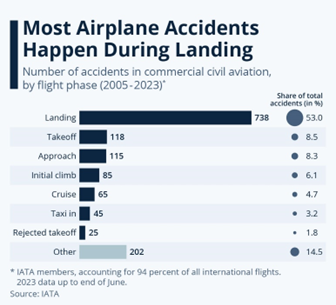INDIAN POLITY, GOVERNANCE AND SOCIAL JUSTICE
ANNUAL STATUS OF EDUCATION REPORT-2021
THE CONTEXT: In November 2021, the Annual Status of Education Report (ASER) -2021 was published highlighting School enrolment fell during pandemic and the gap between States in access to online education with varying levels of access to technology, school and family resources resulting in Digital Divide.
ABOUT 2021 REPORT
- The percentage of rural children who were not enrolled in school doubled during the pandemic, with Government schools seeing an increase in enrolment at the expense of private schools, according to the report. Over a third of children enrolled in Classes 1 and 2 have never attended school in person.
- In a survey of over 76,000 households with children aged six to 14, ASER found that while 92% of children had textbooks for their grade, only a third had access to any other learning resources or support.
- With smartphone availability and access limited, online learning was restricted to a quarter of students, though there were major differences in the experience of students from different States.
- For instance, 91% of students from Kerala and almost 80% from Himachal Pradesh had online education, but only 10% from Bihar and 13% from West Bengal.
THE MAJOR SHIFT
- In both the 2020 and 2021 surveys, that figure had jumped to 6%. Government school enrolment spiked significantly from 64.3% in 2018 to 70.3% in 2021, while private school enrolment dropped from 32.5% to 24.4% over the same period.
- “The shift to government school enrolment could be a result of financial distress, the closure of affordable private schools and the movement of migrants to rural areas,” Also,
- Due to reverse Migration (Urban to Rural)
- Loss of income during a pandemic
- Small schools couldn’t Sustain
Tuition classes:
- During the pandemic, almost 40% of students took tuition classes, as many parents struggled to provide the learning support students were not receiving from closed schools.
- Although textbook distribution was a success story in most States, with 92% of students having the texts for their grade level, many students did not receive much else.
- Online learning (Digital Divide): With smartphone availability and access limited, online learning was restricted to a quarter of students.
- Inter-state variations: 91% of students from Kerala and almost 80% from Himachal Pradesh had online education, but only 10% from Bihar and 13% from West Bengal.
- Access to study materials: textbook distribution was a success story in most States, with 92% of students having the texts for their grade level.

Measures taken by the Government:
- National Knowledge Network, (NKN)
- PRAGYATA Guidelines
- National Programme on Technology Enhanced Learning
- SWAYAM MOOC’S
WHO GLOBAL REPORT ON TRENDS IN PREVALENCE OF TOBACCO USE 2000–2025
THE CONTEXT: World Health Organisation (WHO) published the 4th edition of Global report on trends in the prevalence of tobacco use 2000-2025.
THE EXPLANATION:
- As per the report, South-East Asia Region achieved the fastest rate of decline in the use of tobacco. The average prevalence of smoking among men decreased to 25% in 2020, as against 50% in 2000.
- In South-East Region, tobacco smoking among women decreased from 9% in 2000 to 1.6% in the year 2020.
- India and Nepal are the countries, which is likely to achieve a 30% relative reduction in tobacco use in order to meet the Global NCD action target plan by 2025.
- WHO report highlights that, if tobacco control efforts continue with the current level, smoking rates in this region can reach as low as 11% in 2025. It will be the second-lowest Regional average rate after Africa, which is 5% in 2025.
- The South-East Asia Region has the highest rates of tobacco use, which is 29 per cent of the population. It accounts for 432 million users.
- This region is also home to 266 million smokeless tobacco users out of 355 million across the globe.
How was this progress achieved?
- This progress was the result of the effective implementation of the FCTC and MPOWER package of WHO as well as a set of six cost-effective & high impact measures in order to help countries in reducing the demand and supply of tobacco.
- Tobacco use is one of the key risk factors of non-communicable diseases and effective tobacco control is significant to prevent and control NCDs. It is a flagship priority of this region since 2014.
| WHO’s MPOWER MEASURES:
· In line with the WHO Framework Convention on Tobacco Control (WHO FCTC), WHO introduced the MPOWER measures in 2008. MPOWER is a set of six cost-effective and high impact measures that help countries reduce the demand for tobacco. These measures include: · Monitoring tobacco use and prevention policies. · Protecting people from tobacco smoke. · Offering help to quit tobacco use. · Warning about the dangers of tobacco. · Enforcing bans on tobacco advertising, promotion, and sponsorship. · Raising taxes on tobacco. |

SEXUAL INTENT “NOT SKIN TO SKIN CONTACT: SC
THE CONTEXT: The Supreme Court quashed a Bombay High Court decision to acquit a man charged with assault under the Protection of Children from Sexual Offences Act (POCSO) solely on the grounds that he groped the child over her clothes without “skin-to-skin” contact.
THE EXPLANATION:
- “The act of touching a sexual part of the body with sexual intent will not be trivialised and not excluded under Section 7 of the POCSO Act”.
- The Bench noted that the most important ingredient in Section 7 was the sexual intent of the offender and not skin-to-skin contact.
- The bench said that “where the intention of the Legislature cannot be given effect to, courts would accept the bolder construction for the purpose of bringing about an effective result. Restricting the interpretation of the words ‘touch’ or ‘physical contact’ to ‘skin-to-skin contact’ would not only be a narrow and pedantic interpretation of the provision contained in Section 7…but it would lead to an absurd interpretation of the said provision.”
- “Abuse and outraging the modesty of a child has been a matter of great concern. POCSO Act was enacted to deal with evil and to impart speedy justice, for addressing this issue, Special courts were needs to be formed.
|
[Section 7 of the Act says that a person commits sexual assault if he or she “with sexual intent touches the vagina, penis, anus or breast of the child or makes the child touch the vagina, penis, anus or breast of such person or any other person, or does any other act with sexual intent, which involves physical contact. ] |
About Protection of Children from Sexual Offences Act, 2012:
- It was enacted to protect the children from offences of sexual assault, sexual harassment, and pornography with due regard for safeguarding the interest and well-being of children.
- It was amended in August 2019 to provide more stringent punishment, including the death penalty, for sexual crimes against children.
- It defines a child as any person below eighteen years of age and regards the best interests and welfare of the child as a matter of paramount importance at every stage, to ensure the healthy physical, emotional, intellectual and social development of the child.
- It deems a sexual assault to be “aggravated” under certain circumstances, such as when the abused child is mentally ill or when the abuse is committed by a person in a position of trust or authority like a family member, police officer, teacher, or doctor.
- It also casts the police in the role of child protectors during the investigative process.
- The Act stipulates that a case of child sexual abuse must be disposed of within one year from the date the offence is reported.
- Implementation of Act by statutory bodies- the National Commission for the Protection of Child Rights (NCPCR) and State Commissions for the Protection of Child Rights (SCPCRs).
POCSO (Amendment) Act 2019:
- Provision of the death penalty in cases of sexual offences against children.
- Levy of fines and imprisonment to curb child pornography.
- Protection of children from sexual offences in times of natural calamities.
INDIAN ECONOMY
INDIA IS THE LARGEST RECIPIENT OF REMITTANCES
THE CONTEXT: According to the report by World Bank, India received $87 billion in remittances in 2021 which constitutes India as the world’s largest recipient.
THE EXPLANATION:
- According to the report, the United States was the biggest source, accounting for over 20% of these funds.
- India is followed by China, Mexico, the Philippines, and Egypt in terms of overall remittance received.
- A resurgence in COVID-19 cases and the subsequent mobility restrictions pose the biggest risks to remittance flow.
- The resurgence of a new wave of COVID-19 cases and the subsequent mobility restrictions pose the biggest risks to the outlook for global growth, employment, and remittance flows to developing countries.
What are Remittances?
- Remittances represent one of the largest sources of income for people in low-income and developing nations. It often exceeds the amount of direct investment and official development assistance.
- The sender is typically an immigrant and the recipient a relative back home.
- Remittances help families afford food, healthcare, and basic needs.
- India is the world’s biggest recipient of remittances. Remittances bolster India’s foreign exchange reserves and helps fund its current account deficit.
ABOUT WORLD BANK
The World Bank Group is an international partnership comprising 189 countries and five constituent institutions that works towards eradicating poverty and creating prosperity.

Reports Published by World Bank:
- World Development Report
- Global Economic Prospects Report
NOTE:
- The ease of Doing Business Report was discontinued by World Bank in September 2021.
ENVIRONMENT AND ECOLOGY
RARE FISH ON THE BRINK OF EXTINCTION
THE CONTEXT: In Assam, the rare Barca snakehead fish is on the brink of extinction, since it is an ornamental fish, it is in high demand in the international market and is susceptible to illegal trade.
THE EXPLANATION:
- “Pipli Cheng” or “Cheng Garaka” is the local name for the Channa barcaor the Barca snakehead fish.
- The fish Channa barca is endemic to the upper Brahmaputra river basin. The fish is mainly found in Orang National Park located on the northern bank of the Brahmaputra river.
What is Ornamental Fish?
Fishes that are kept in home aquariums, or for aesthetic purposes are considered ornamental fish.
Why the demand?
- This snakehead fish is attractive to look at and has high ornamental value amongst specialist aquarists, in national and international markets.
- Since it is rarely available and restricted to only a particular region of the Brahmaputra basin, it has become extremely expensive over the years and is now counted as one of the most expensive fish in the world.
- Overall, it has been assessed as data deficient by the IUCN and in 2014 it was assessed by the IUCN as critically endangered due to habitat loss in Bangladesh.
What’s the Way forward:
- “If threatened species are exported without captive breeding or mass propagation then they will soon cease to exist in the region.
- A proper and strict checking system should be put in place in exit points like the airport and the railway stations so that these highly threatened fish species cannot be smuggled out,”
- “Monoculture should also be done if captive breeding is done at all so that the female of the species is not exported out and so that the ornamental and endemic status of the species is not compromised.
|
About Orang National Park
|
RISE IN AMMONIA DUE TO BIOMASS BURNING
THE CONTEXT: In West Africa rise in ammonia level was observed which is linked to biomass burning. The trend was centred over Nigeria and the Southern coast.
THE EXPLANATION:
- Ammonia concentration in the air increased substantially in West Africa and the Lake Victoria region. According to a new study by the National Aeronautics and Space Administration (NASA).
- The rise was found to be linked with biomass burning as well as expansion and intensification of agricultural practices.
- The rise in ammonia concentration in Western Africa was previously linked to fertiliser use. However, this study found that most of the increase occurred before the start of the planting season. Fertiliser is not typically applied in West Africa until the start of the growing season (April).
- The study found regional hotspots in the Lake Victoria basin region, South Sudanese wetlands and along the Nile delta and river as well.
- In the Lake Victoria basin, the expansion of agricultural area and fertiliser use led to increases in ammonia concentration over the study period.
- Countries in Europe have committed to modest reductions of ammonia emissions in the framework of the Gothenburg Protocol, part of the convention on Long-Range Transboundary Air Pollution and the National Emissions Ceilings directive.
Ammonia:
- It is a colourless gas and is used as an industrial chemical in the production of fertilisers, plastics, synthetic fibres, dyes, and other products.
- Ammonia reduces the amount of oxygen as it is transformed into oxidised forms of nitrogen.
- It occurs naturally in the environment from the breakdown of organic waste matter, and may also find its way to ground and surface water sources through industrial effluents, contamination by sewage or agricultural runoff.
A CLEAN OCEAN BY 2030: SAYS UN EXPERTS
THE CONTEXT: The Clean Ocean International Expert Group of the UN Decade for Ocean Science for Sustainable Development will formally present its shortlist of activities and goals, and a strategy to reach them, in a “Clean Ocean Manifesto” at the outset of a three-day online conference on achieving a clean ocean.
THE EXPLANATION:
- The deep-sea biodiversity expert outlines “the challenges and some of the opportunities that the Ocean Decade can provide for a Clean Ocean.”
The statement charts the most direct route to a clean ocean citing these objectives for 2030:
- Enlarge understanding of pathways for spread and fates of pollutants
- Reduce and remove top-priority forms of pollution (e.g., marine debris) by large amounts, as much as 50% to 90%
- To prevent a recurrence, reduce sources or emission of pollutants (e.g., anthropogenic noise, discarded plastic and harmful chemicals, farming practices adding harmful sediment outflow)
- Improve dramatically the outcomes of control measures (e.g., to decrease amounts of mercury in tuna, die-offs of marine life, eutrophication)
- Improve monitoring (often as part of the Global Ocean Observing System [GOOS]) for more accurate, precise, timely, comprehensive real-time tracing of spills and monitoring of ocean soundscapes; improve systems to provide timely warning of pollutants emerging and increasing
- Identify and accelerate the development and adoption of technologies to promote a Clean Ocean. These could range from cleaner, more efficient motors and fuels to new forms of remediation and waste management; better ways to monitor, track and map marine pollutants and progress toward a clean ocean (such as aerial remote sensing, genomics, and hydrophone arrays); and better technologies for emergency clean-up.
- Improve national mechanisms (legal, regulatory) for control and prevention, better align financial incentives, and lift compliance with international treaties
Interim objectives for 2025
The expert group underlined that “This process should aim to define and attract financial and other support to meet an initial set of goals for 2025, followed by goals for the end of the Ocean Decade in 2030.”
The conference highlights more than 30 activities in place or in development around the world that can make important contributions by 2030 to a Clean Ocean.
These include initiatives to:
- Successfully and consistently monitor marine debris from space as part of an Integrated Global Marine Debris Observing System
- Operate deep-sea observatories in the Atlantic that document and publicize multiple stressors
- Observe the vast Southern Ocean give early warnings of possible pollution hot spots in this relatively pristine ocean
- Instrument 30% of coastal city ocean spaces to report on pollution changes including restoration
- Identify and greatly reduce persistent organic pollutants globally.
INTERNATIONAL RELATIONS
INDIA RE-ELECTED TO UNESCO
THE CONTEXT: India was re-elected to the executive board of the UN’s cultural and education organisation for the 2021-25 term.
THE EXPLANATION:
- India was re-elected to Group IV of Asian and Pacific States which also include Japan, Philippines, Vietnam, Cook Islands and China.
About the Executive Board:
- The UNESCO Executive Board is one of the three constitutional organs of the UN agency (the others being the General Conference and the Secretariat) and it is elected by the General Conference.
- The executive board consists of 58 member-states, each with a four-year term. It examines the programme of work for the organisation and corresponding budget estimates submitted to it by the director-general, according to UNESCO.
About UNESCO:
United Nations Educational, Scientific and Cultural Organization (UNESCO) is a specialized agency of the United Nations (UN). It seeks to build peace through international cooperation in Education, Sciences and Culture.
- Established in November 1965.
- It has 195 Members and 8 Associate Members and is governed by the General Conference and the Executive Board
- The Secretariat, headed by the Director-General, implements the decisions of these two bodies. Headquartered at Paris.
- UNESCO’s mission is to contribute to the building of a culture of peace, the eradication of poverty, sustainable development and intercultural dialogue through education, the sciences, culture, communication and information.
Objectives:
- Attaining quality education for all and lifelong learning
- Mobilizing science knowledge and policy for sustainable development
- Addressing emerging social and ethical challenges
- Fostering cultural diversity, intercultural dialogue and a culture of peace
- Building inclusive knowledge societies through information and communication
- It also focuses on a set of objectives in the global priority areas “Africa” and “Gender Equality”
| Quick Facts:
· Three UNESCO member states are not UN members: Cook Islands, Niue, and Palestine. · While three UN member states (Israel, Liechtenstein, United States) are not UNESCO members. |
MISCELLANEOUS
REZANG LA MEMORIAL
THE CONTEXT: Defence Minister inaugurates renovated memorial during the Rezang La battle anniversary.
THE EXPLANATION:
- It will now include the names of Army personnel who lost their lives in the violent clash at Galway last year.
Where is Rezang La?
- Rezang La is a mountain pass on the Line of Actual Control in Ladakh.
- It is located between the village of Chushul and the Spanggur Lake that stretches across both Indian and Chinese territories.
- Rezang La is one of the heights of the Kailash Range in the Chushul Sub-sector, occupied by India in August 2020, that provided leverage in the standoff negotiations.
- The positions India occupied on the Kailash Ranges allowed the Indian troops to dominate not only China’s Moldo Garrison but also the strategically sensitive Spanggur Gap, which was used by China to launch an offensive during the 1962 War.
About the battle:
- Troops from the 13 Kumaon Regiment defeated several waves of the Chinese People’s Liberation Army in 1962.
- Despite being heavily outnumbered, soldiers of the regiment fought to the last man standing, under freezing temperatures, and with limited ammunition.
THE PRELIMS PRACTICE QUESTIONS
- Consider the following statements about provisions of the POCSO Act 2012:
- The law considers children as those individuals below the age of 16 years of age.
- It dedicated law only for the protection of female children against sexual offences.
- The case under the provision of this law is disposed of within one year from the date of reporting of the offence.
Which of the statements given above is/are correct?
a) 1 and 2 only
b) 2 and 3 only
c) 3 only
d) 1, 2 and 3
ANSWER FOR NOVEMBER 17th, 2021 PRELIMS PRACTICE QUESTIONS
Answer: B
Explanation:
- Statement 1 is incorrect: It is published annually by GermanWatch, a non-profit organisation.
- Statement 2 is correct: India ranked at 7th position in Global CRI 2021 with a CRI score of 16.67. The score and position improvised in comparison to the 2020 report, where India ranked at the 5th position with a CRI score of 18.17.


